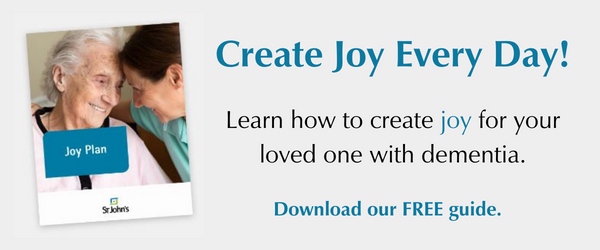Author of Reclaiming Joy Together, Daphne Johnson, states that the book is “to serve as both an inspiration and a practical tool that will allow others to successfully build a Respite Community to honor and care for those families living with Alzheimer’s disease and other forms of dementia.” Having had the privilege to hear Johnson speak in person at a recent New York State Caregiving and Respite Coalition conference, it can be attested that she is pure “motivation” to take on the cause of providing respite to caregivers of people living with dementia.
Whether you are a part of a faith community or not, the Respite ministry model, which Johnson outlines in the book, can be adopted by denominational and nondenominational groups of committed citizens alike. Johnson writes “volunteers make a Respite community thrive in any locale. It is an adaptable model that can be tailored to your community and fit your resources and gifts.”
In the book, Johnson outlines some key pillars to success, which are part of the Respite for All model. She provides this overview on the Respite for All website:
Pillar 1: Respite 101 – This is your foundation, the vision, history, and concept of what Respite is.
Pillar 2: The Reason for Respite – To fully understand the need for Respite, you need to know a little more about the world of Alzheimer’s and dementia. This will provide details on the common types of dementia as well as insights from leading brain health experts, which has helped shape the key concepts of the Respite volunteer model.
Pillar 3: The Respite Difference – This is where you truly start to see the program come alive, demonstrating how the Respite Community delivers dignity – how it is differentiated through core beliefs grounded in faith, understanding the Respite theology, and more.
Pillar 4: Volunteers – The Respite for All model was initially designed to give a break to care partners. However, it quickly evolved to extend that same break to the volunteers. They are the lifeblood of our program. Without them, we wouldn’t exist. This section helps you truly grasp their role, how they come to speak the Language of Respite, and their training.
Pillar 5: How to Start a Respite Program – Yes, it might seem like there is a little bit of legwork and some concept grasping to be done, but once you’re here, you’re golden because that means it’s time to get started. This is your roadmap to your Respite for All community – your organizational structure, the dollars and cents, a discussion of program leaders, and how to sustain and sell your success.
Pillar 6: Resource Guide – You didn’t think we were going to leave you hanging like that, did you? Of course, we have a number of other resources to help you get things off the ground and maintain this life-changing program.
Scattered throughout the book between the practical lessons are what Johnson entitles “Meaningful Moments.” A mixture of short stories, testimonials, and anecdotes, these pages provide the reader with the true inspiration to pursue the kind of work Johnson is calling readers to do. There is the story of Jack, a person living with dementia, and his spousal caregiver Mary, who each came to terms with the fact that they needed a break from each other so that could better face the journey of dementia together. Also especially touching is the story of Eileen, a respite participant, and Beebe, a volunteer whose husband had recently passed away. A friendship blossomed between these two and they were able to each contribute in a relationship where both gained what they needed.
There are practical tips and learning lessons also provided throughout the book that can be applied to many diverse kinds of respite situations. From the types of activities to include in programming to how to hire and retain volunteers, Johnson equips readers with information that can be directly applied in real environments. Especially helpful is the list of “comments to say throughout the day” to keep volunteers motivated such as “I really appreciate you being a good friend to (participant) today” or “I was out last week and I am so glad to see you. How have you been?”
There is also content practical to any caregiver in this book. Common definitions of types of dementia and how to manage different kinds of behaviors are useful for any caregiver. Also helpful are the lists directly related to running a respite program such as “Necessary Supplies” and “A Typical Respite Day” program agenda.
Johnson’s contagious spirit and empowering, inspirational voice are woven throughout the pages of this book. It is a recommended read for caregivers, even if participating in a respite program or volunteering for one is not on your immediate horizon. And, check out the Respite for All Foundation website for even more motivation to get involved at some level in this important cause.
Want to Volunteer for a Local Respite Program?
St. John’s now offers a free, drop-off respite program for qualifying people with dementia out in the community on Thursdays, 11 a.m. to 3 p.m., at St. John’s Home, 150 Highland Avenue. Volunteers are always needed to help with the program and are vital for allowing the program to expand to support even more caregivers and people living with dementia in the Rochester area.
If you are interested in volunteering, contact St. John’s Home Volunteer Coordinator at 585-760-1293 or you can also send email to volunteer@stjohnsliving.org.
To inquire about eligibility for your loved one to participate in the respite program, contact St. John’s Respite Coordinator Tanya Henderson at 585-760-1550 or email thenderson@stjohnsliving.org. If you would like to view a virtual tour of St. John’s Respite Program, click here.









